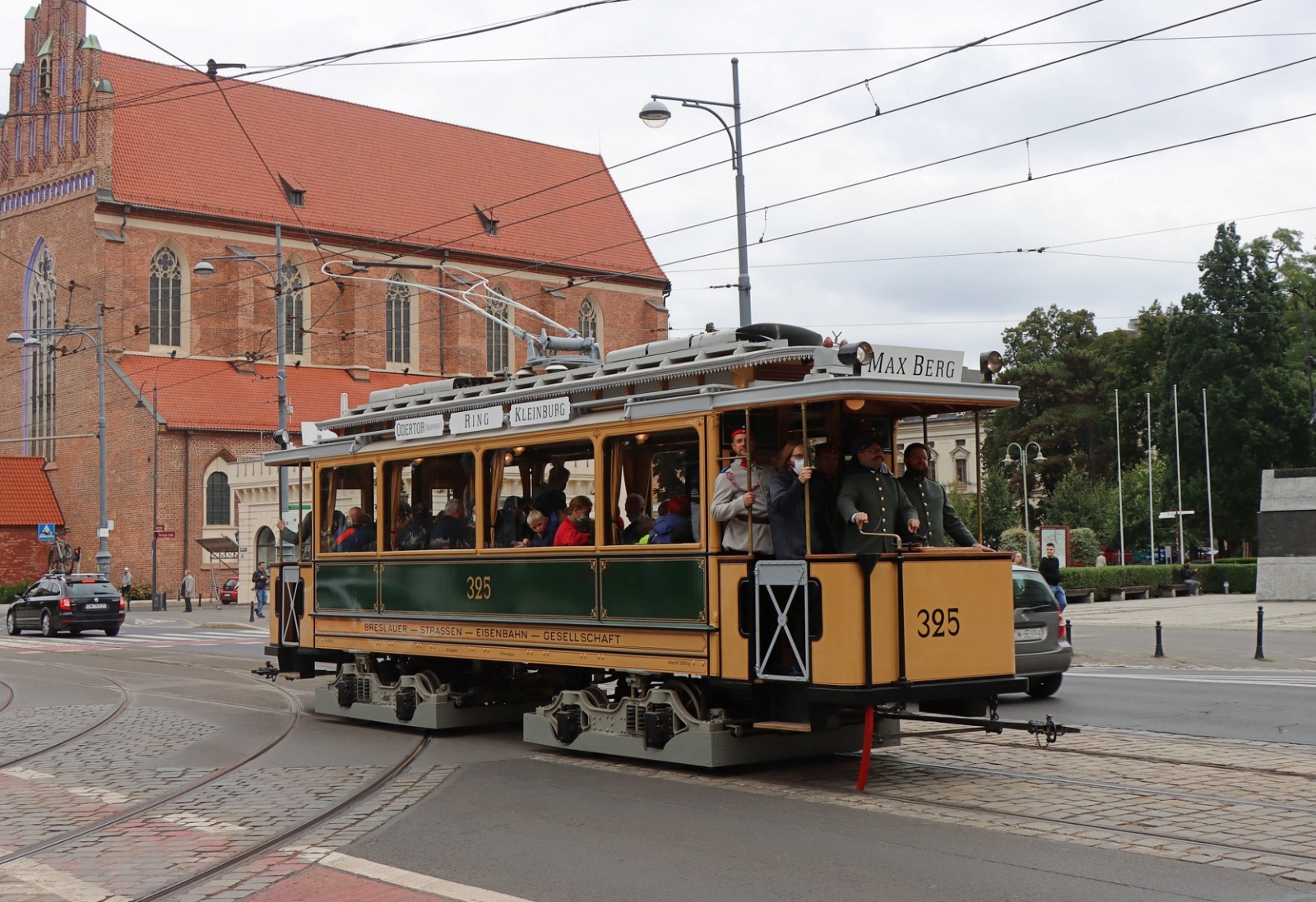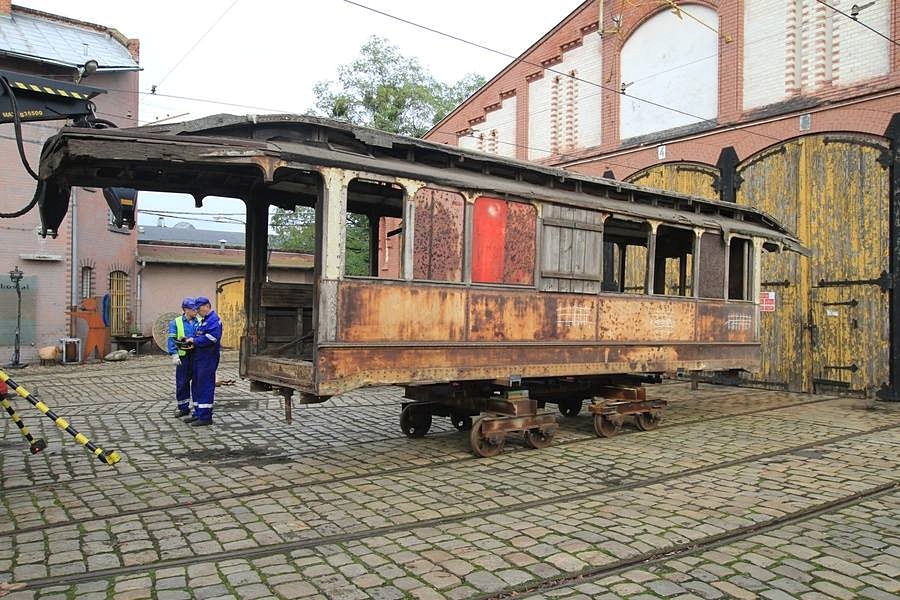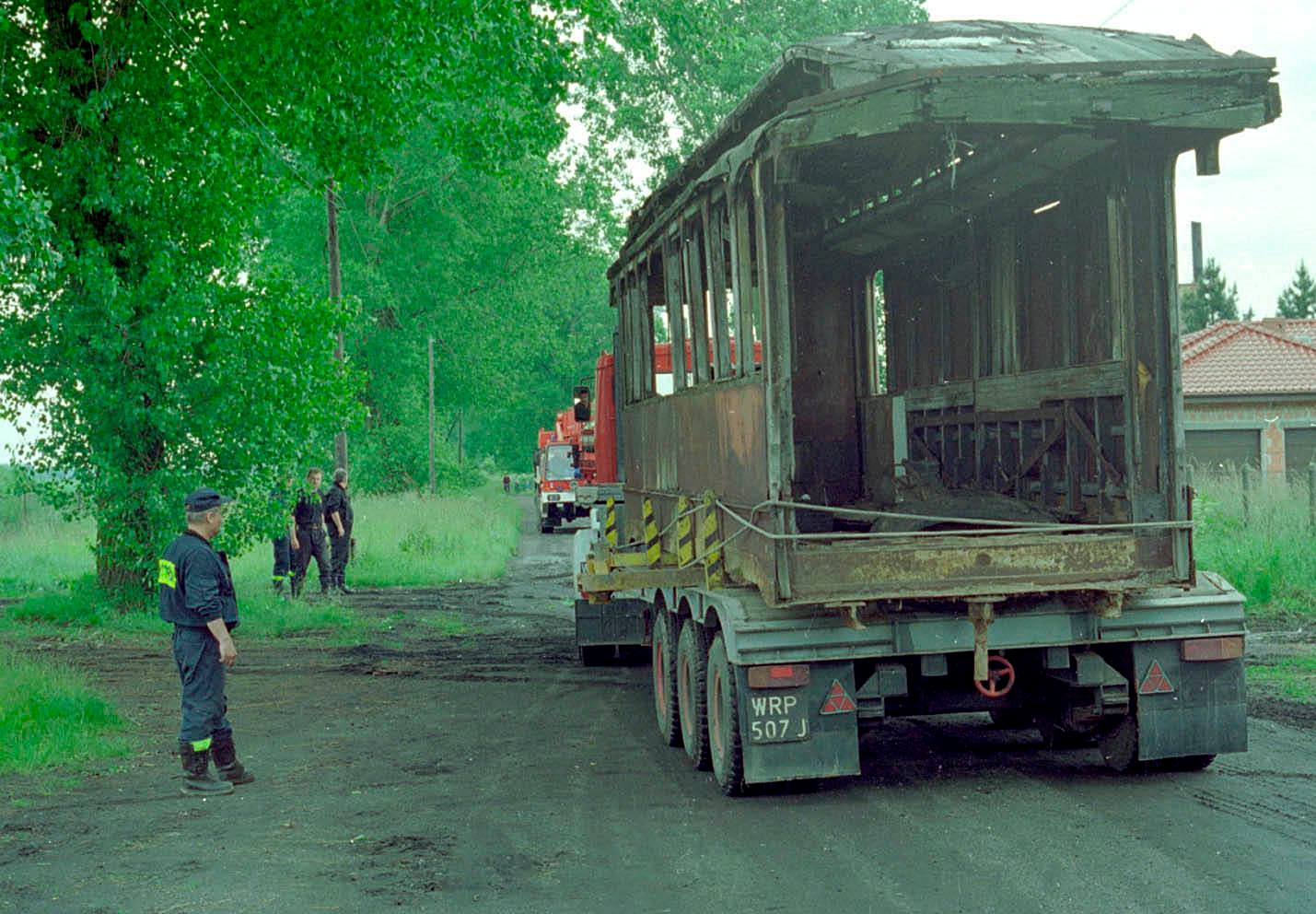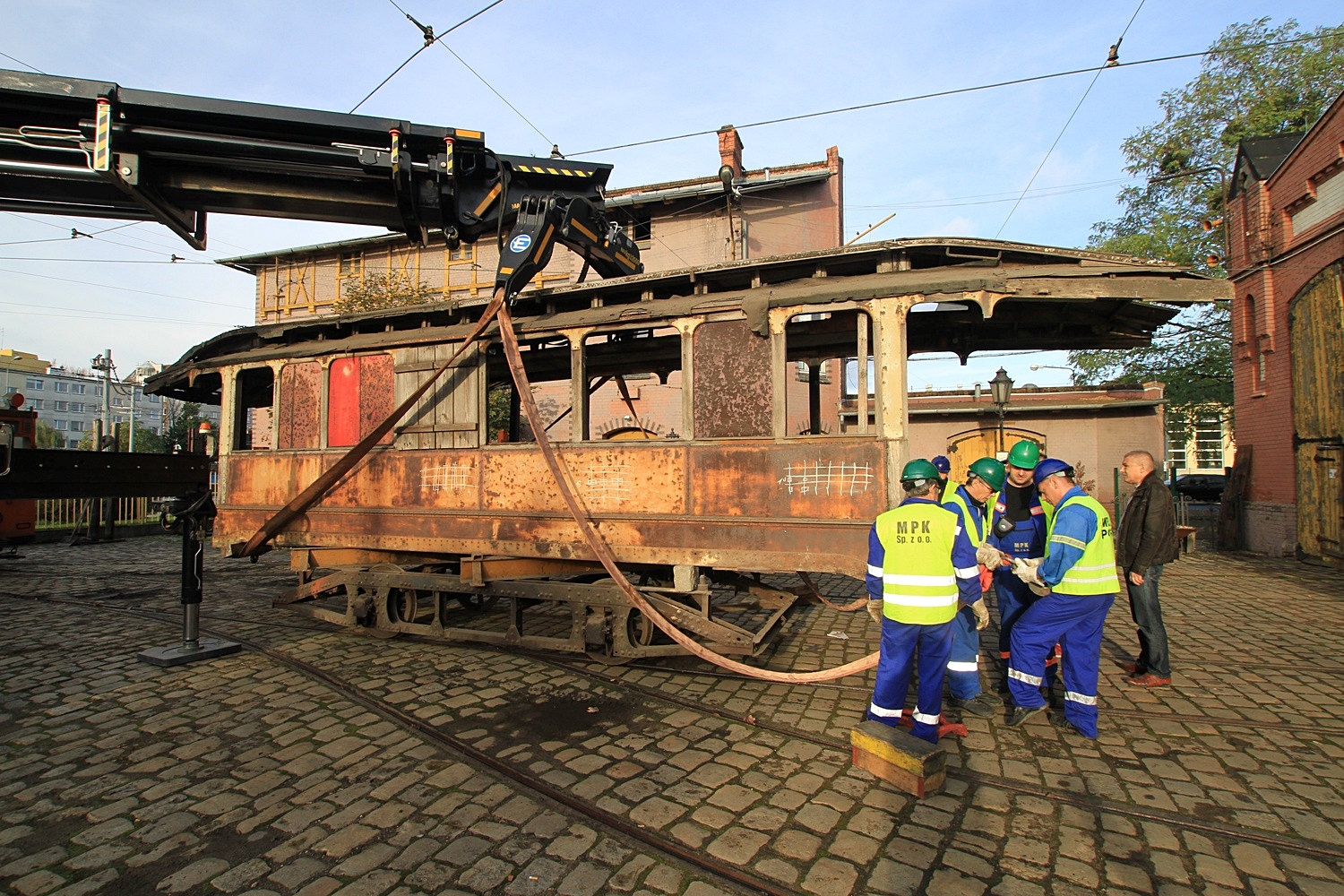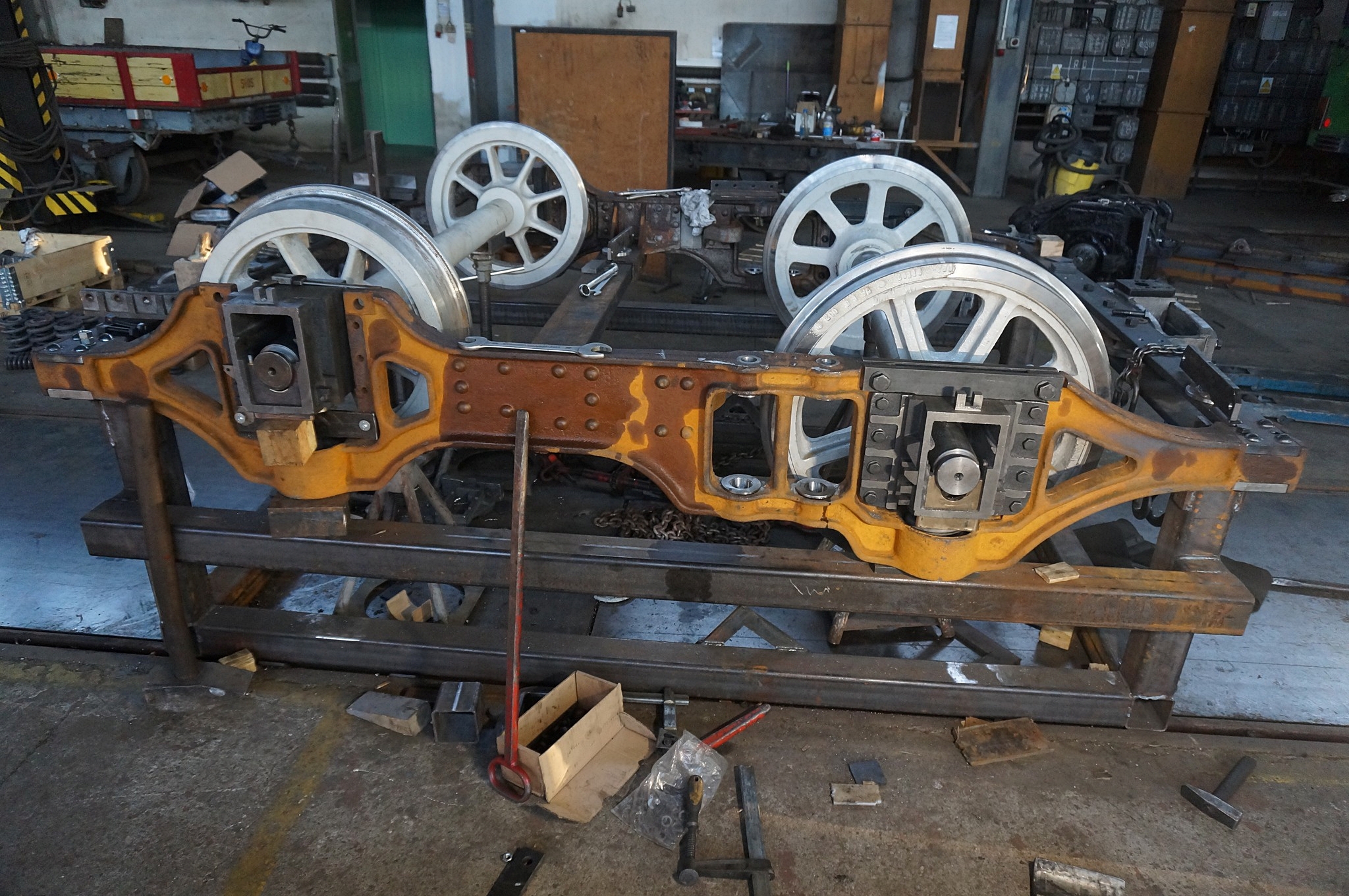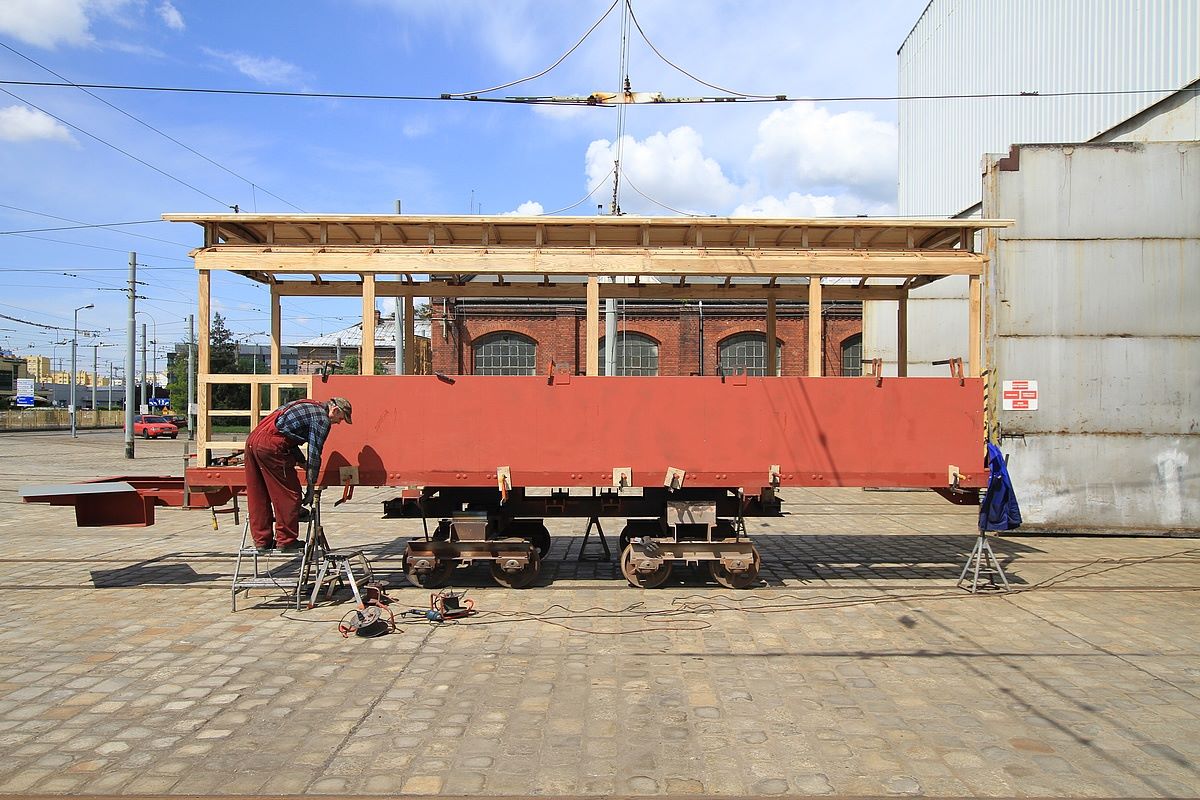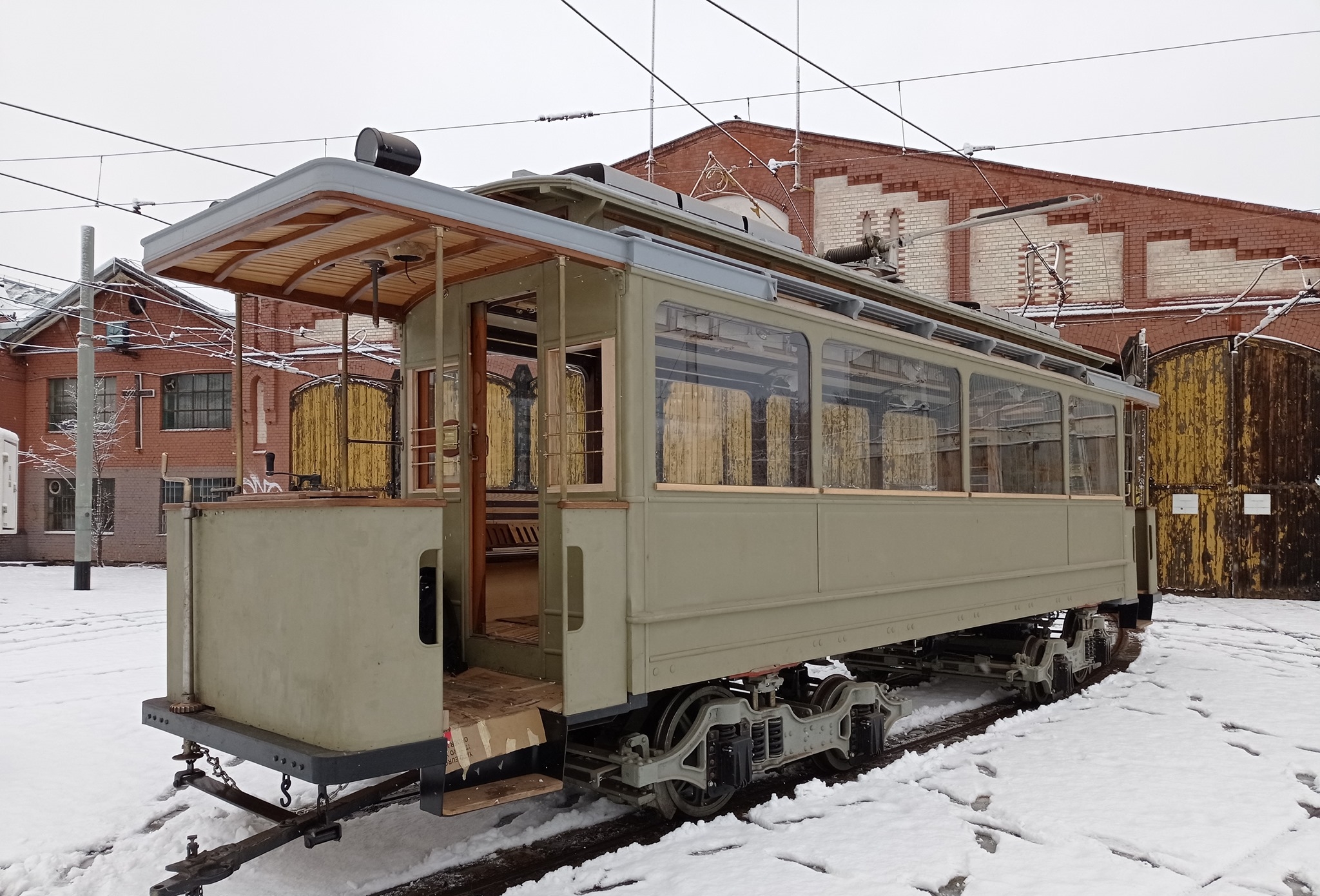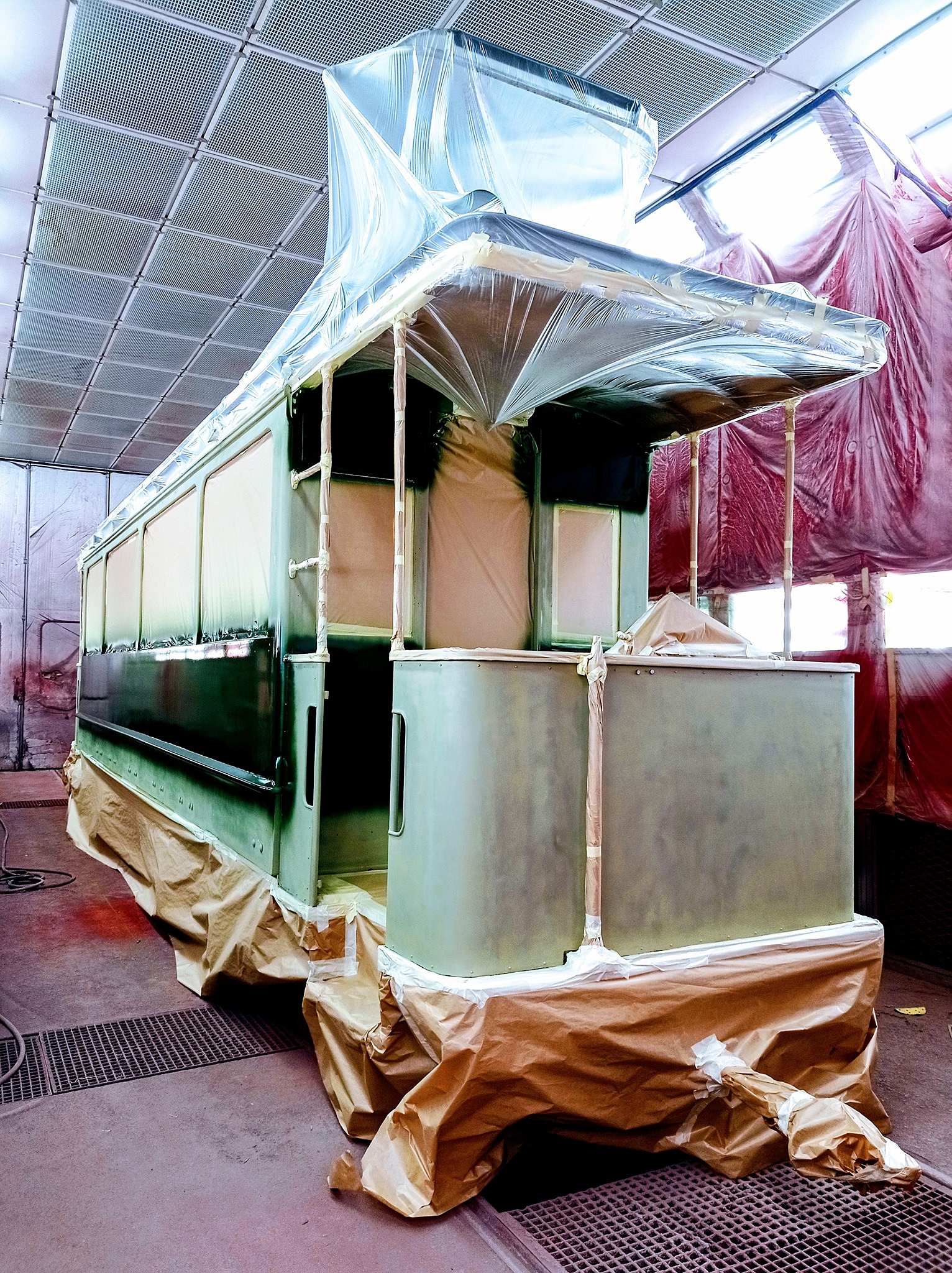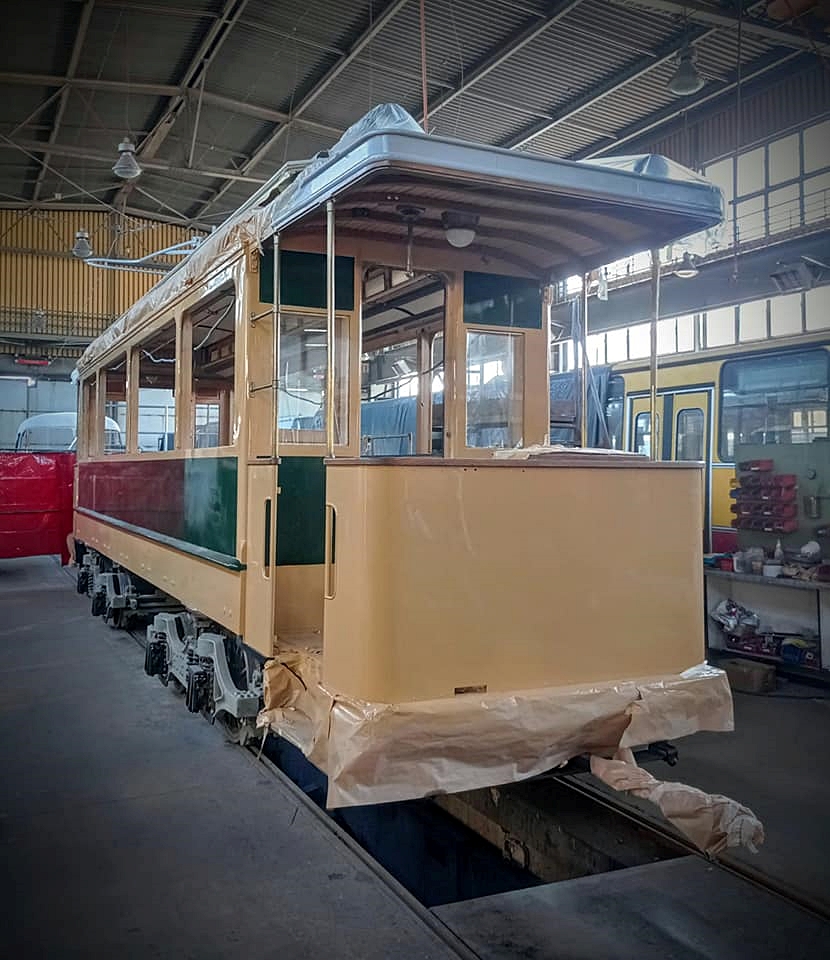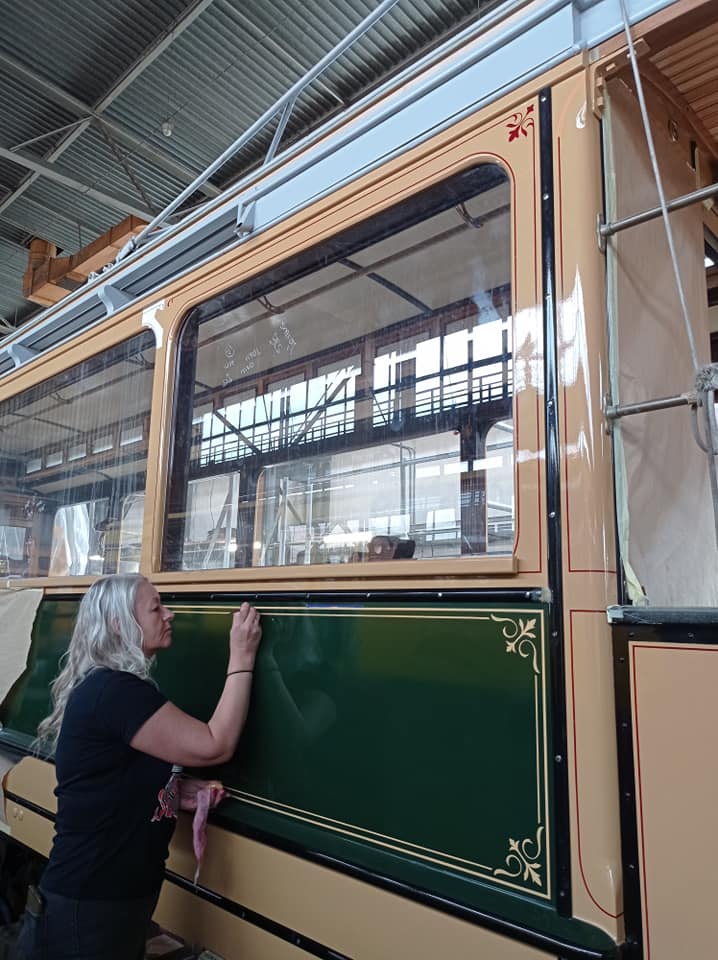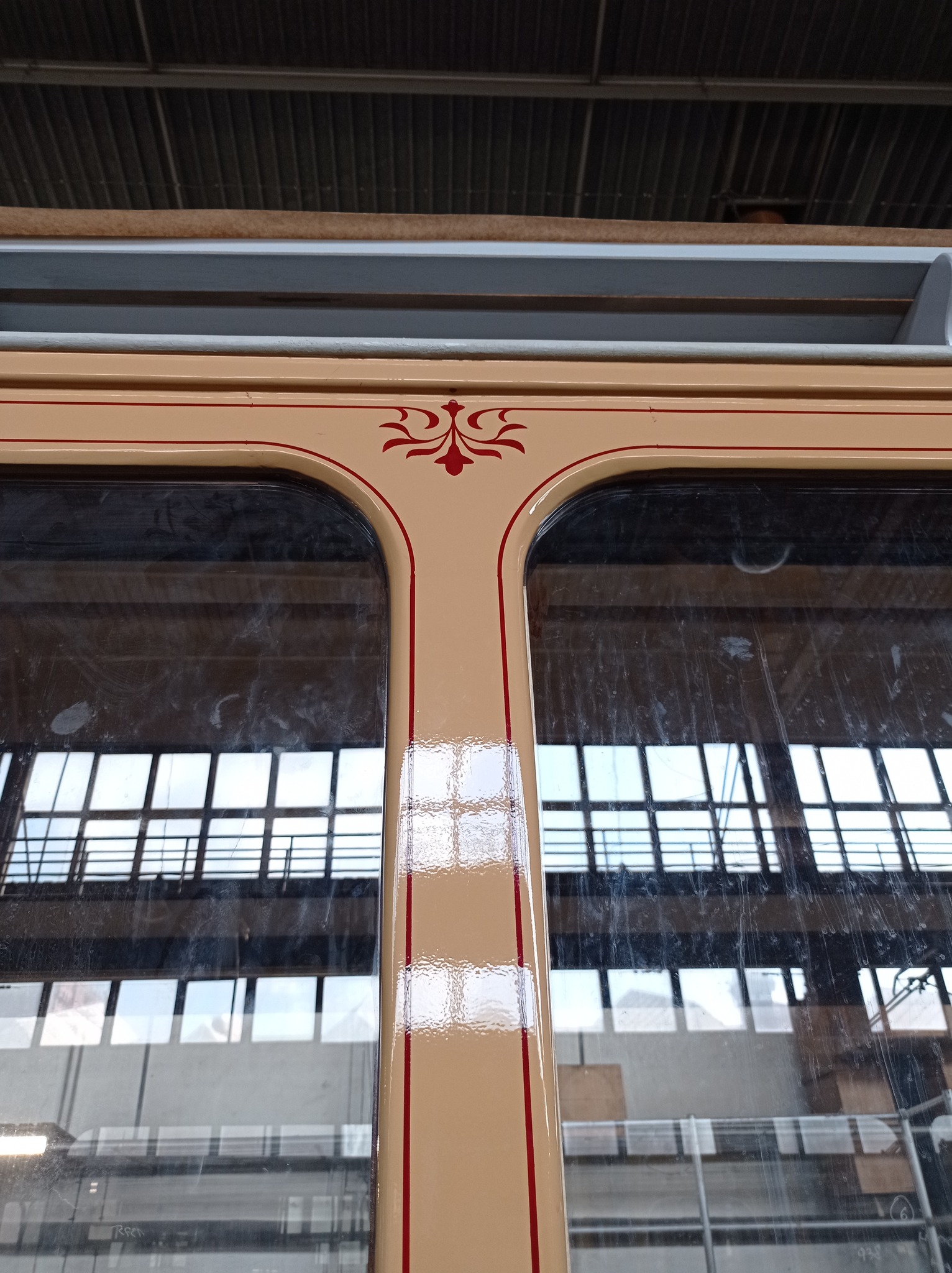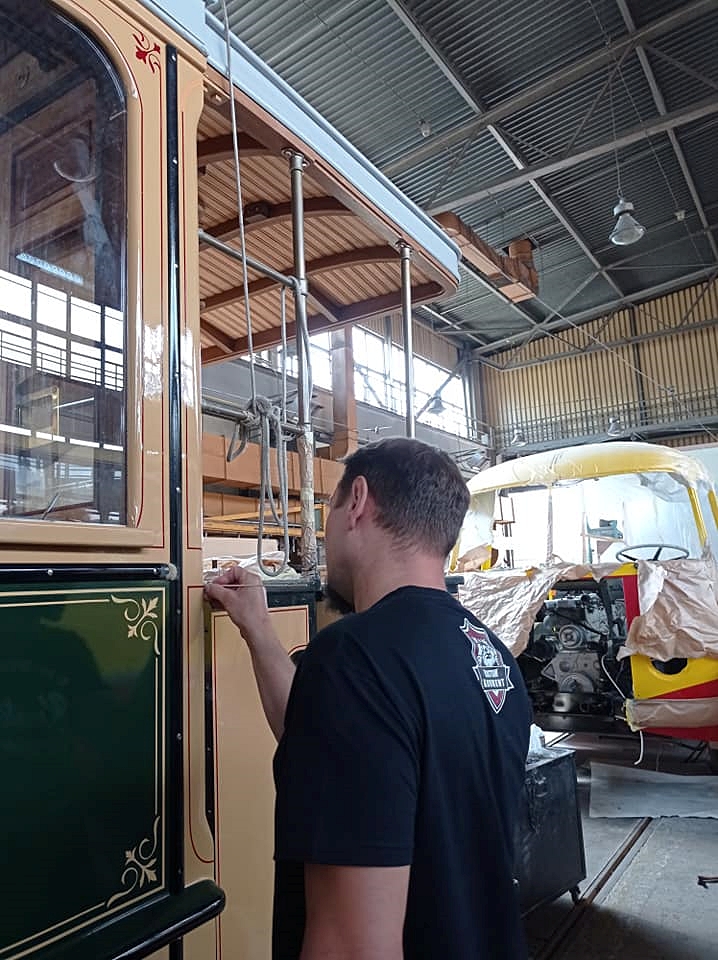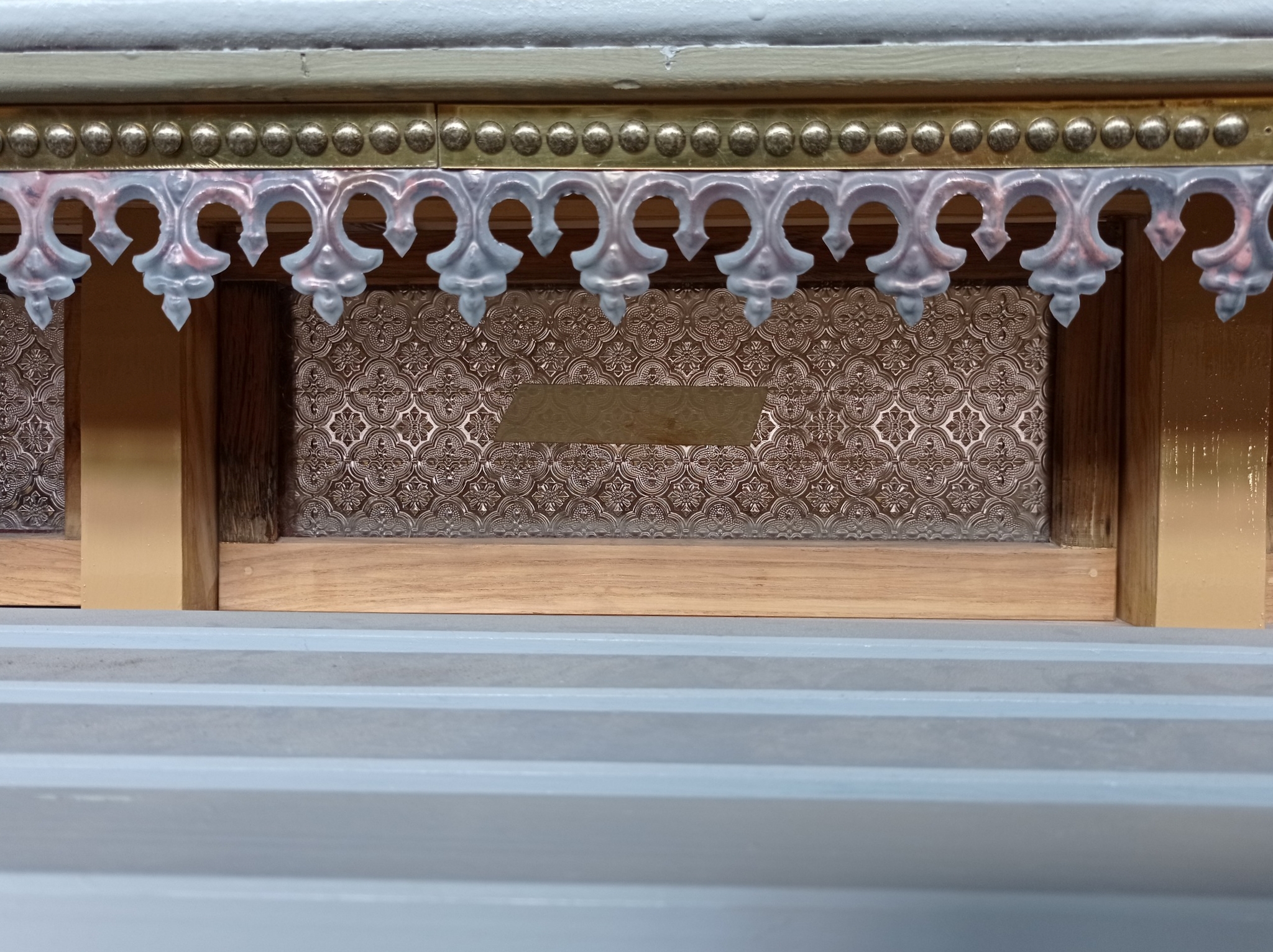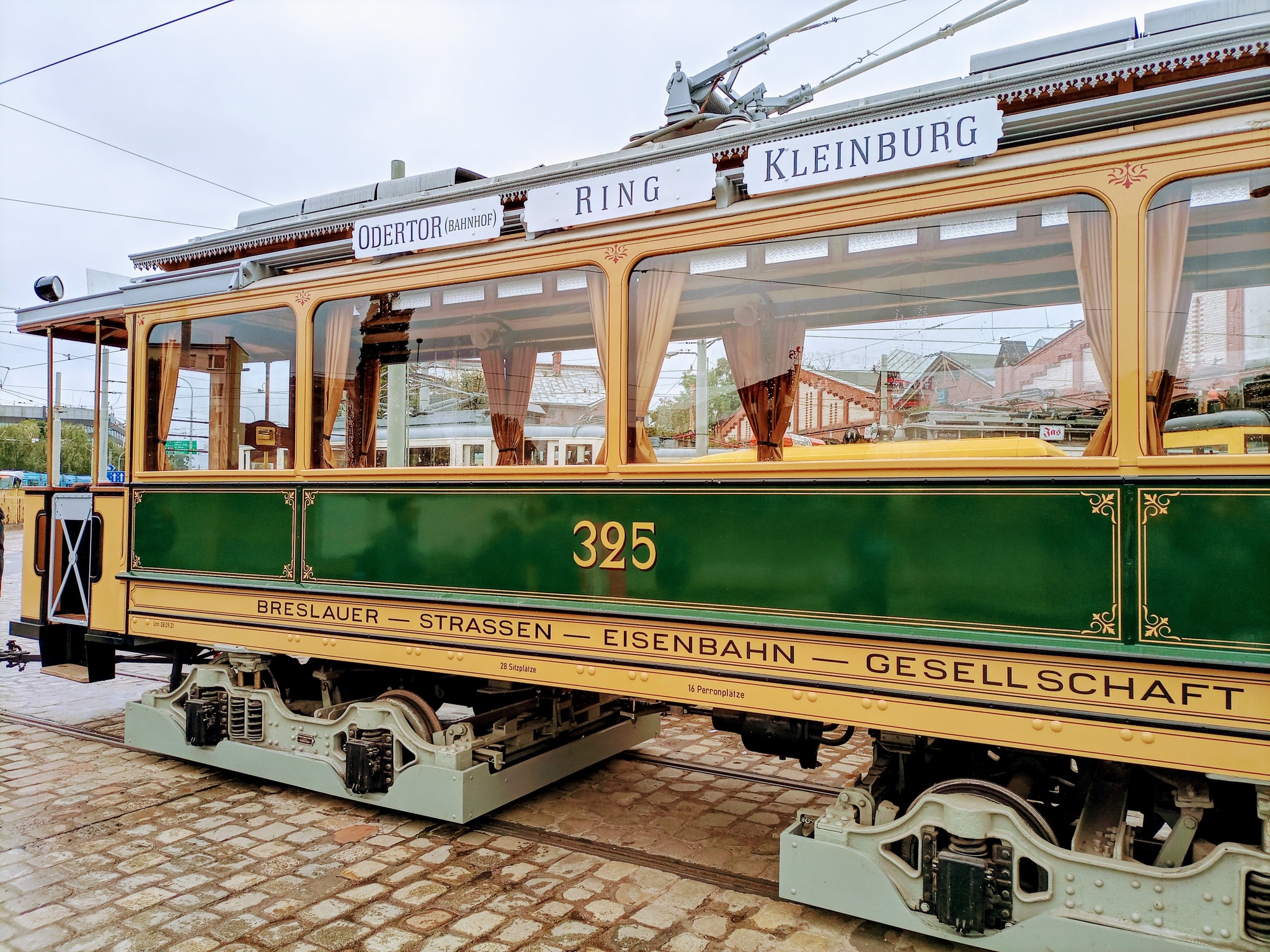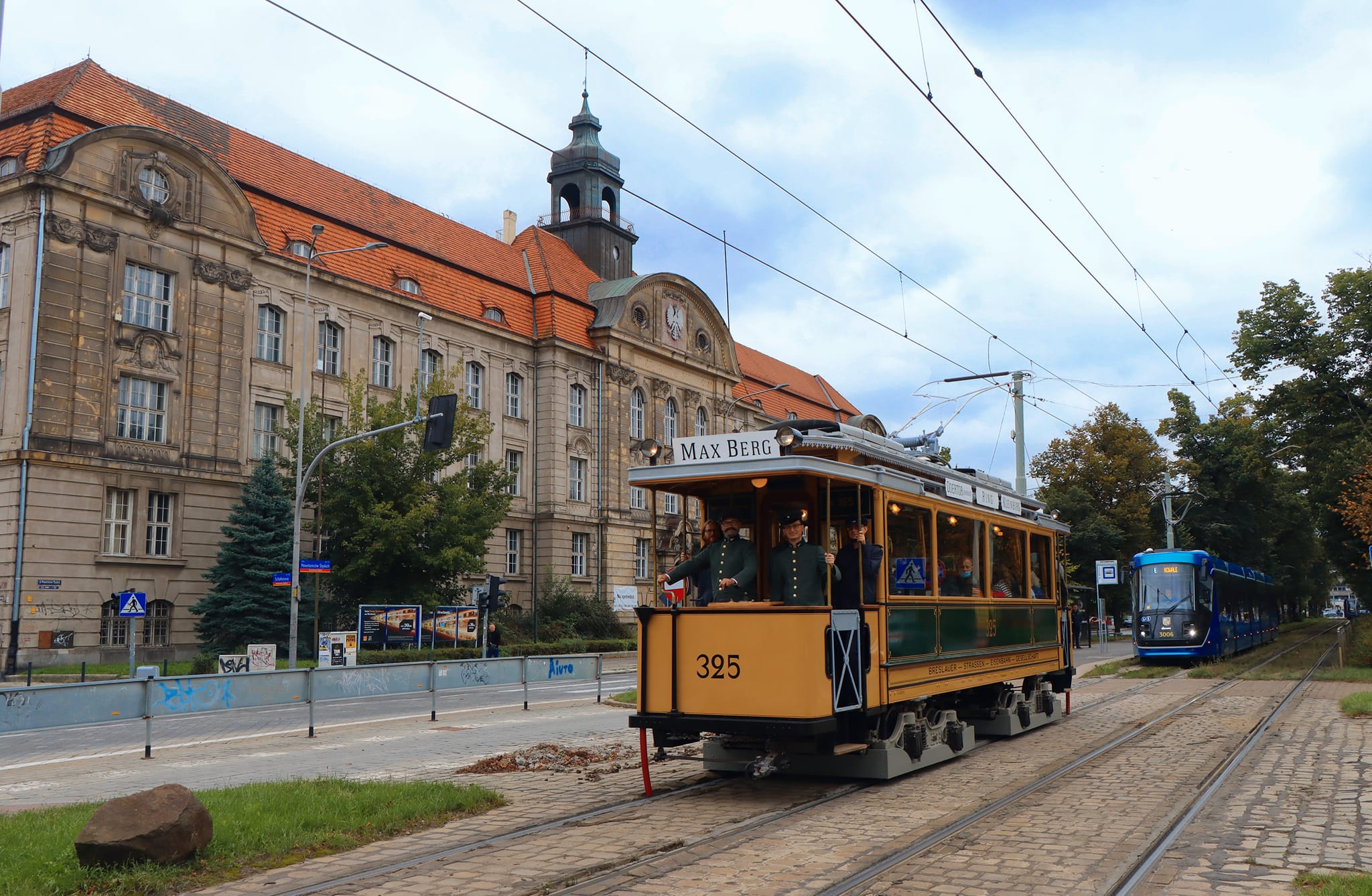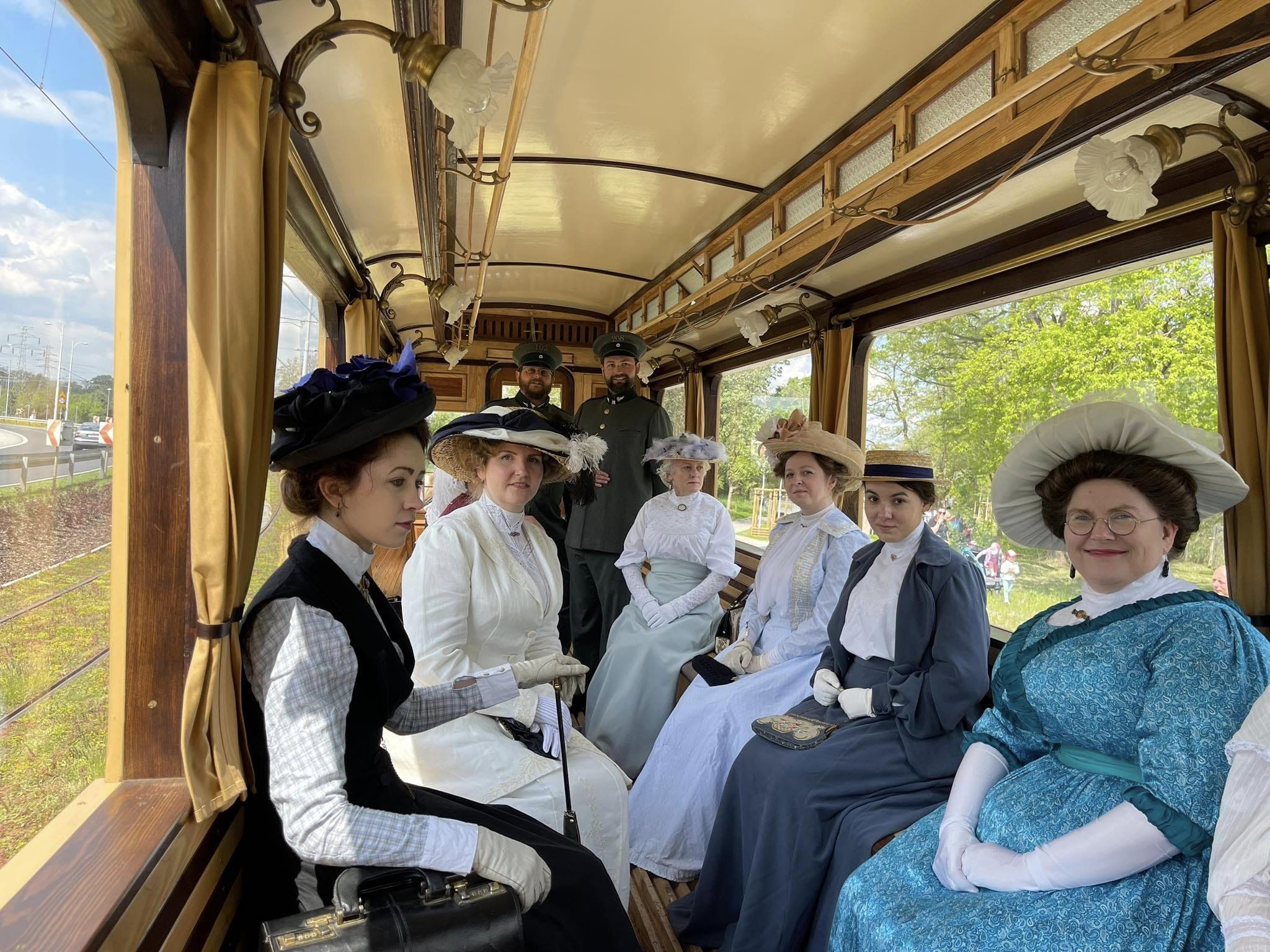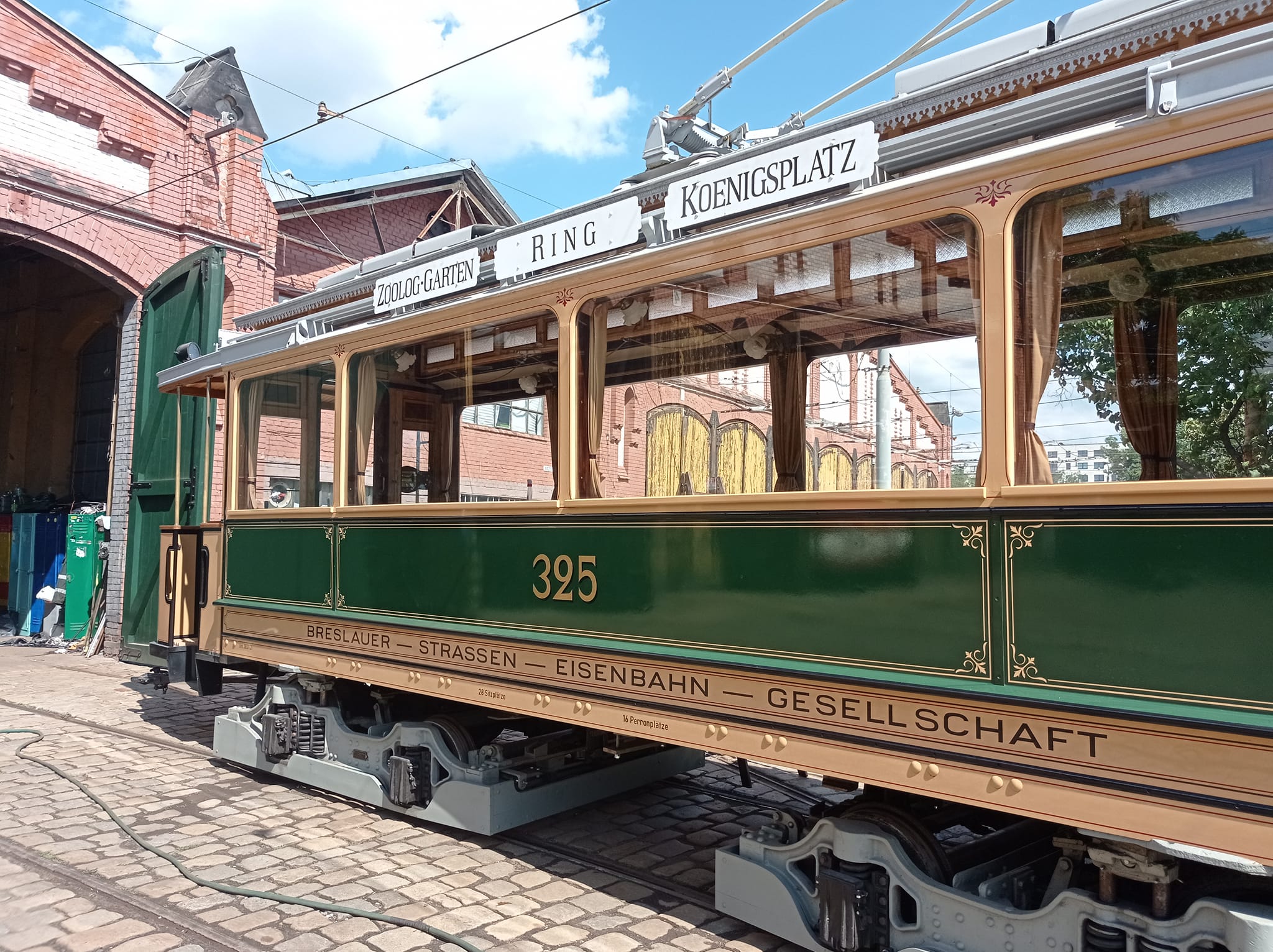Wrocław’s four-axle tram car Maximum #325 has undergone a spectacular renovation. It now shines and looks as if it has just left the factory. The effort and work put into the restoration of the vehicle was awarded the Lower Silesian Conservation Laurel 2023 in the “mobile monument” category. The award was given for the exemplary but difficult conservation of the object, preceded by meticulous and complex research
It lasted eight years, from the moment the body was found. During the work, the original decoration with historicising ornamentation from the turn of the 20th century was recreated, using similar materials and workmanship techniques. The chassis uses period components, supplemented by new parts reconstructed from the original. It is the only preserved tram of its type in Poland and one of the few in Europe. After restoration it is operational and in use
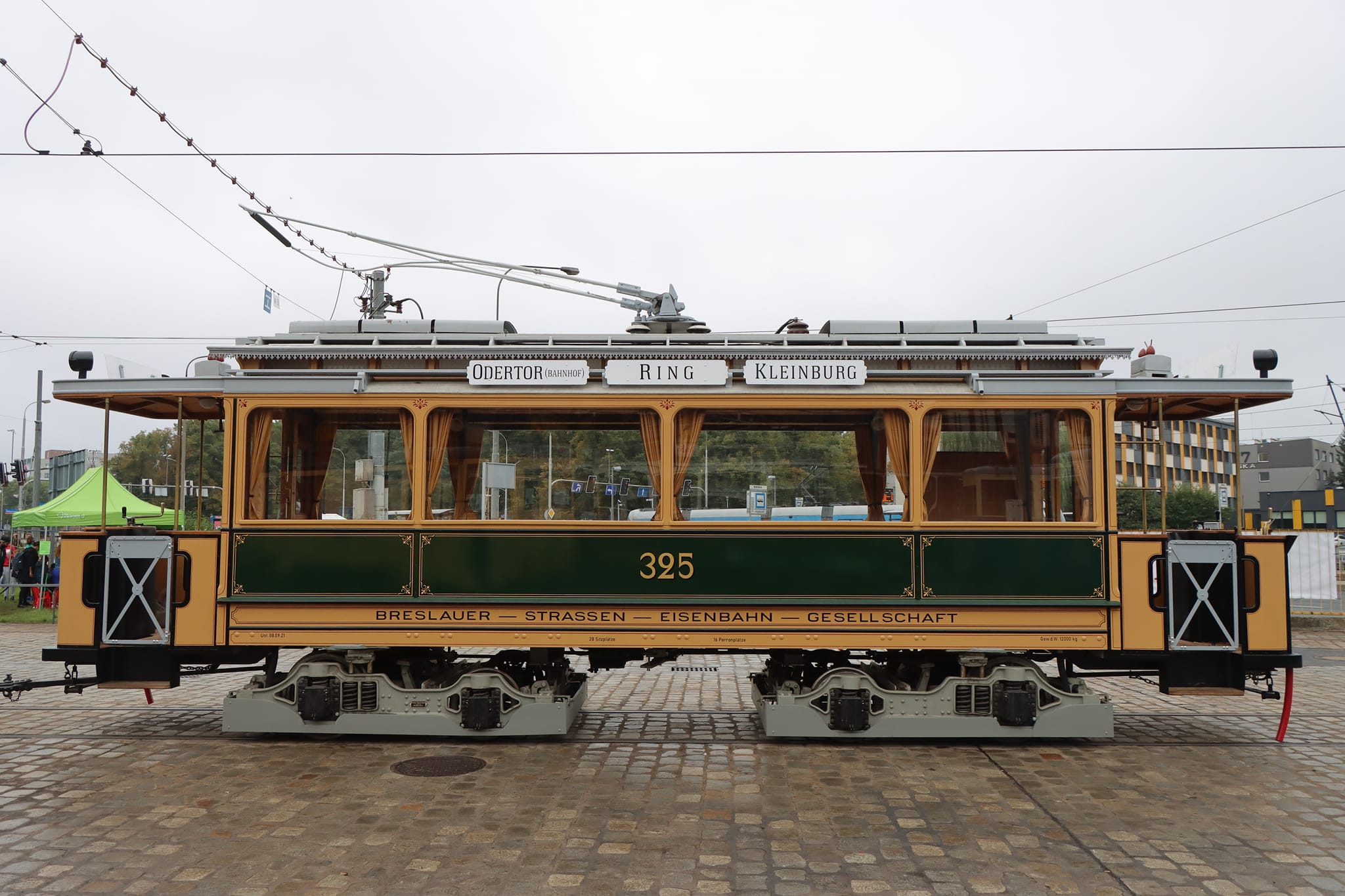
The Falkenried Maximum is a tram model from 1901, produced specifically for Wrocław in a number of 50 units. This tram, unlike the other designs of the period, was characterised by having two bogies instead of one – in addition with different axle diameters. Thanks to this design, the vehicles were able to carry a larger number of passengers compared to other trams. These vehicles were modernised in the late 1920s and made similar in appearance to the Linke-Hoffmann Standard trams. After the war, the number of these cars was 49. 25 were handed over to Warsaw, and after a few years one more, converted to a nursery tram. The remaining cars remained in service in Wrocław until the early 1960s. After years of use, almost all of these carriages were scrapped – with the exception of one, which was purchased by an employee of the Main Workshops and became a garden shed on an allotment in Smolec near Wrocław

Years later, it was discovered by Wrocław transport enthusiasts and bought back for a symbolic amount. The unique tram, however, was already a run-down, rusty wreck, theoretically without any chance of renovation. The box of the surviving Maximum had been rotting in the Popowice depot for many years when, in 2014, the city of Wrocław decided to rebuild the historic tram. The task was extremely difficult, however, as it was necessary to actually re-create all the elements of the carriage from scratch. Plant ornaments, flower-shaped sconces, window curtains – everything was handmade from traditional materials, in wood and brass, based on preserved photographs and drawings. Thanks to the painstaking work of Wrocław researchers into the history of public transport and the contractor for the work, the Club of City Transport Enthusiasts, the tram was successfully reconstructed and restored to its factory appearance. The wagon, which was built on the basis of the salvaged wreckage, is now unique on a European scale. All the parts in the carriage have been made very meticulously and, by collecting information on the carriage’s pre-war appearance, it has been possible to reproduce it to its 1901 state. The vehicle bears the pre-war rolling stock number #325
The initiator, investor and coordinator of the project was the Club of City Transport Enthusiasts in Wrocław. The conservation programme was prepared by Dr Tomasz Sielicki and Dr Krzysztof Kołodziejczyk. The work was carried out by POLMAT Artur Matkowski Rakowice Wielkie. The work was financed by the Wrocław Municipality as part of the Wrocław Civic Budget and competitions for non-governmental organisations in Wrocław
Source: wroclawskakomunikacja.pl, rekonstrukcjeiodbudowy.pl
Read also: Metamorphosis | Renovation | Monument | Public transport | History | Wrocław

